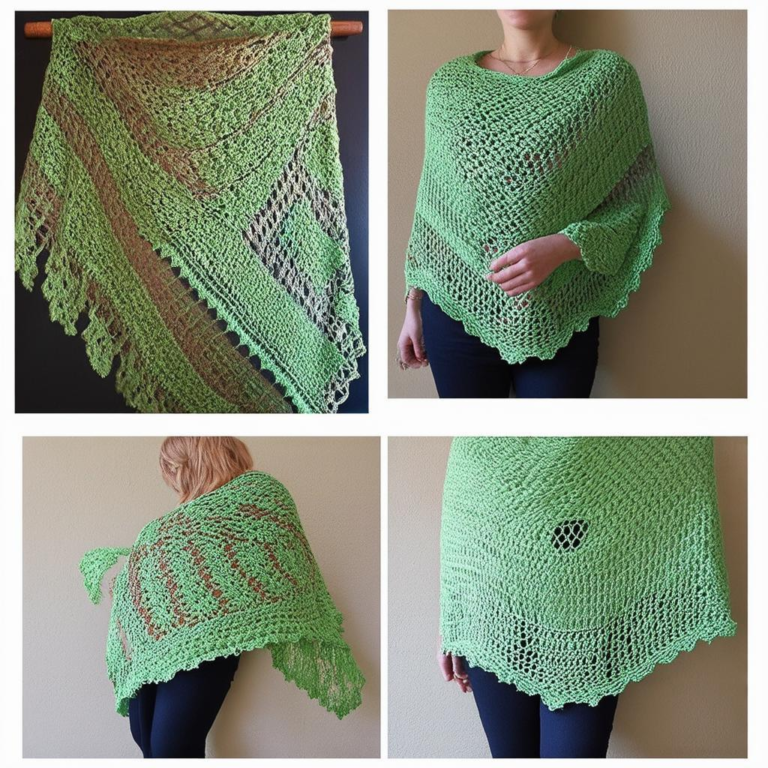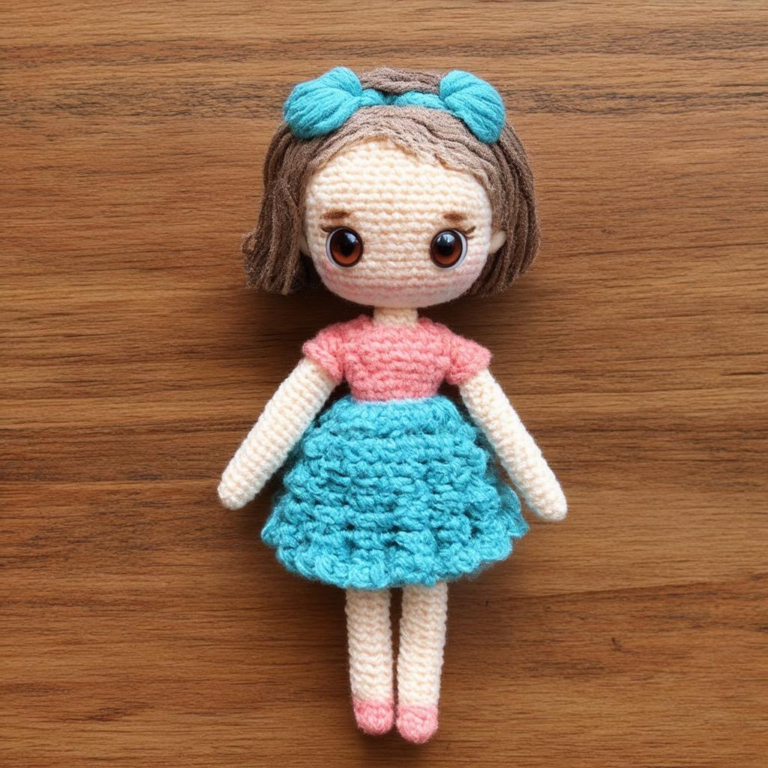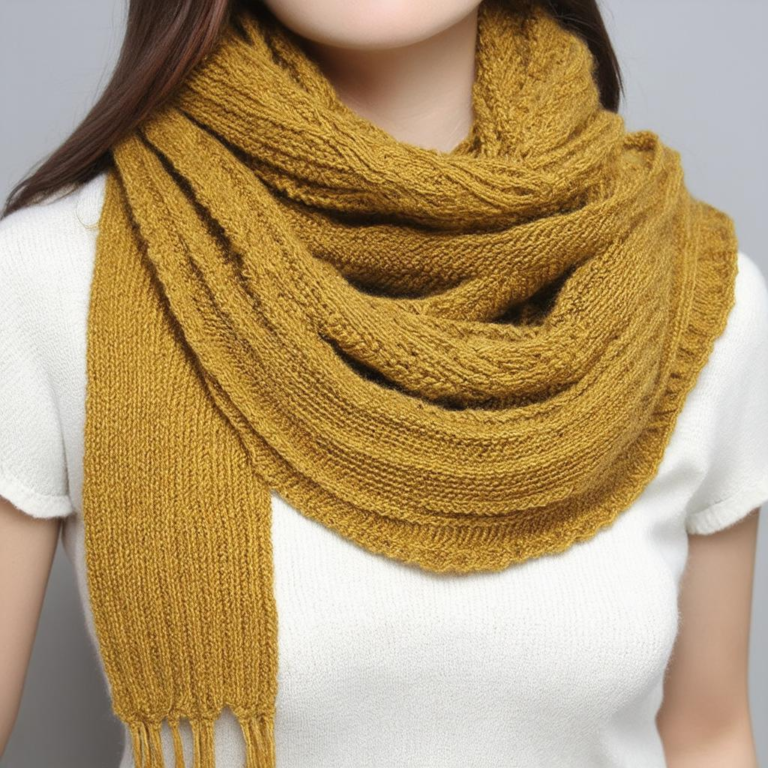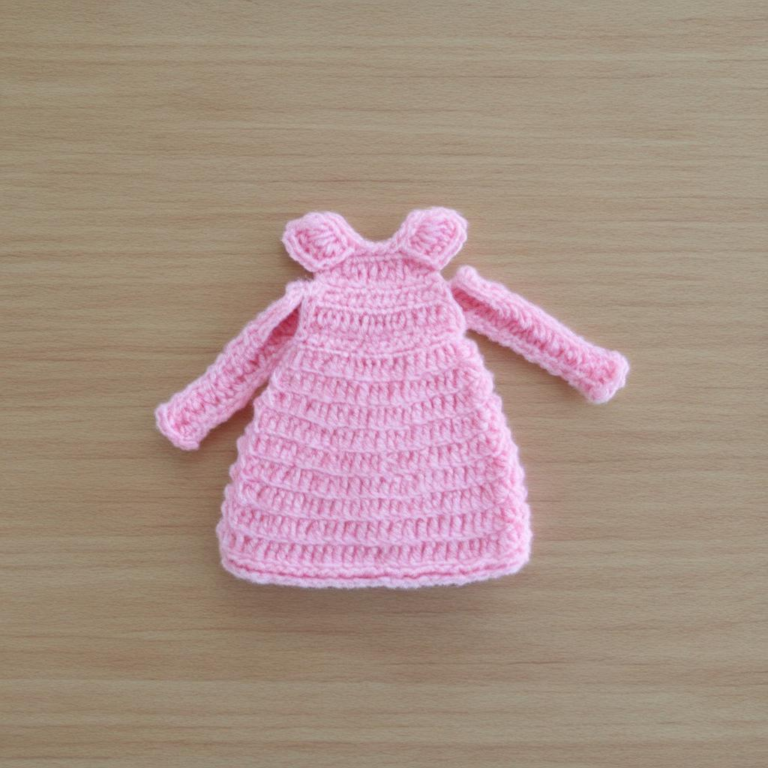[Check out teh latest arrivals now!](https://www.amazon.com/s?k=crochet doll hair&s=date-desc-rank&tag=smartymode-20)
the Ultimate Guide to Crochet Doll Hair: Top Choices and Techniques for Realistic Results
Creating adorable crochet dolls is a rewarding experience, but adding the perfect hairstyle can truly bring your amigurumi creations to life. The right hair can make or break the realism and charm of your doll. This article delves into the world of crochet doll hair, providing you with a extensive guide to selecting the best options and techniques for achieving truly realistic results.Whether you’re a beginner or an experienced crocheter looking to refine your skills, this guide will equip you with the knowledge and inspiration you need to craft stunning doll hairstyles. We’ll explore different yarns, methods of attachment, and various styling techniques, ensuring your dolls have hair that’s as unique and captivating as they are.
[Explore Top Rated crochet doll hair on Amazon.]
Understanding the Basics of Crochet Doll Hair
Before diving into specifics, it’s crucial to understand the fundamental principles of creating crochet doll hair. The process involves several key elements,including choosing the right yarn,determining the method of attachment,and styling the hair to achieve the desired look.
Choosing the Right Yarn for Crochet Doll Hair
The yarn you select is paramount to the overall appearance of your doll’s hair. Not all yarn is created equal, and some are better suited for amigurumi hair than others.
Acrylic Yarn: This is a popular choice due to its affordability, wide range of colors, and ease of care. Acrylic yarn is durable and ideal for dolls intended for play. It’s a good option for beginners, as it’s readily available and forgiving. [5]
Wool Yarn: Wool provides a lovely texture and a more natural appearance. Though, it can be slightly more challenging to work with and requires handwashing. Wool offers a slightly more realistic look due to its matte finish.
Cotton Yarn: Cotton is another viable option,particularly if you’re working with lighter dolls or if you prefer a matte finish. It works similarly to wool and can hold curls and styles nicely, although it may require a bit more effort.
specialty Yarns: Consider novelty yarns, such as eyelash yarn or boucle yarn, for unique and textured hairstyles. These can add a touch of whimsy and are excellent for creating interesting effects, but they may be harder to manage when creating detailed styles.
Blend Yarn: Blended yarns offer the best of both worlds.A cotton-acrylic blend, for example, can provide both the durability of acrylic and the softer finish of cotton. Consider blends that suits your desired results.
When selecting yarn, consider the following:
Durability: especially for dolls intended for children, durability is key. Choose materials that can withstand frequent handling.
Texture: The texture can dramatically alter the overall look and feel. Smooth, shiny yarns will give a different effect than matte or textured ones.
Color: Select colors that complement your doll’s skin tone and the overall design.
Availability & Budget: Find the right yarn within your budget and that aligns with your projects needs.
Essential Tools for Adding Crochet Doll Hair
Having the right tools is just as important as choosing the right yarn. Here are the essential tools you will need:
Crochet Hook: Use a hook size appropriate for the yarn you are using to attach individual strands or create a wig cap. Sizes between 2.25mm and 3.5mm are commonly used.[5]
Tapestry needle(s): A tapestry needle is vital for weaving in yarn ends and attaching strands of hair securely to the doll’s head. [5] They have a large eye and blunt point.
sharp Scissors: A good pair of sharp scissors will be necessary for trimming the hair and styling.
Stitch Markers: These are helpful for marking points or rows, especially when making a wig cap or ensuring hair is evenly spaced in techniques.
Pins: Pins can come in handy for temporary securing the hair while styling or assembling.
Optional: Hair brush or Comb: A fine-toothed comb or brush (one specifically designed for dolls/wigs) can be helpful for managing and styling the finished hair.
[Explore Top Rated crochet doll hair on Amazon.]
Top Methods for Attaching Crochet Doll Hair
Ther are several different methods for adding hair to crochet dolls. Each method has its unique set of pros and cons, and the best method will depend on your preferences, skill level, and the look you are aiming to achieve.
1. Direct Attachment (Sewing Hair Strands)
This is a popular method for adding individual strands directly to the doll’s head. It involves cutting yarn into segments and attaching each piece, giving you a lot of flexibility for layering and creating various styles.
How to do it:
- Cut Yarn Strands: Cut yarn strands to the desired length, remembering that folded over, the hair will be half that length. It’s best to cut a few strands first and adjust as needed while testing how they position on the doll.
- Create the “Knot”: Thread one end of a yarn strand through a tapestry needle and insert the needle into the doll’s head. Bring the needle out again a few stitches away from the entry point, ensuring you enter the same loop from the original step.
- Secure the strand: Pull the strands through to a loop,and then loop the strand around and secure the knot that has been made,and pull tight.
- Continue Adding Strands: Continue adding strands closely next to each other, working your way around the head. The density of hair is adjusted by the proximity of the strands.
- Style as desired: Once all the strands are attached, you can trim and style the hair.
Pros:
Versatile: Allows for a variety of styles, from straight hair to curls, and layering for a full style.
Good for Detail: Ideal for creating specific hairstyles, parting hair and creating intricate looks.
Good for Beginners: While it may take a bit longer, it’s a method that most beginners can grasp.
Cons:
Time Consuming: Attaching strands individually can be a time-intensive process.
Can Be Messy: Loose ends can be hard to manage, and it is advisable to take breaks to ensure the hair looks neat, especially between adding rows.
2. The Wig Cap Method
Creating a crocheted wig cap gives the flexibility to apply the hair evenly with defined borders, and attach it to the doll’s head. This method involves crocheting a cap first and then applying the hair to it, either by loop or direct attachment.
How to do it:
- Crochet a Wig Cap: Create a circular base using a magic ring or by chaining a few stitches together and joining with a slip stitch.Continue to crochet in the round, increasing gradually until the cap fits the doll’s head. A single crochet, or half double crochet stitch will be sturdy for the cap.
- Attach Hair Strands: Once the cap is the desired size,begin attaching hair strands using one of the other methods,such as loop stitch or direct attachment.
- secure the wig: sew or stitch the cap securely onto the doll’s head, using the tapestry needle and a matching yarn.
Pros:
Even Hair Distribution: The cap makes the hair spread evenly on the doll.
Reusable: You can make multiple wig caps and adjust your dolls look easily.
Less Stressful: Sewing the cap on eliminates the need to carefully anchor every strand to the doll’s head itself.
cons:
Initial Work: Requires meaningful crochet work for the cap.
fitting Issues: Ensuring the cap fits perfectly on the doll’s head is necessary.
3. Loop Stitch Method
The loop stitch method is great for creating voluminous hair, and involves creating loops that resemble hair strands directly onto the doll’s head, or on a separate cap.
How to do it:
- create Loops: Rather of cutting yarn strands,you’ll crochet loops onto the doll or onto a wig cap base.
- Secure Loops: After creating each loop, pull the yarn through the doll head using the crochet hook or tapestry needle and secure it through the same stitch.
- Repeat and Layer: Continue to create loops closely together,moving around the head or wig cap. You can layer the loops to make the hair denser. Trim loops as needed to create even length.
Pros:
Full, Voluminous Hair: Creates a thick, textured appearance. Textural: Adds a unique visual element suitable for variety of styles.
Straightforward: The loop stitch is a fairly straightforward stitch to learn once the method is shown.
Cons:
Requires Practice: Getting the spacing and evenness of loops down takes practice.
Less Control: It can be less precise than individually attached strands.
4. Individual Loop method for texture
You can also create loops in the strands themselves, which can make individual elements such as bangs or top-knot pigtails stand out in a unique way from other methods.
How to do it:
- create Knot: Attach a single strand of hair yarn the doll head.
- Make Loops: Instead of pulling the strands taught to secure, leave a loop.
- Secure Loop: Insert the crochet hook into the point from where the stitch emerges and pull through the yarn tail. Securing it with a standard stitch.
- Style as desired: Add the strand,with looping,at different levels for texture and height if applicable.
Pros:
Unique texture: Looping creates volume without needing to work with large amounts of hair.
Customizable: Loops can be made large or small to get different looks.
Straightforward: once the basic technique is shown,this is a simple method to do.
Cons:
Requires accuracy: Loops will lose shape if too insecure.
Less Control: The looping needs to be carefully applied for even texture.
[Explore Top Rated crochet doll hair on Amazon.]
Step-by-step Guide for Attaching Hair
Irrespective of the method you choose,you must first prepare for the next steps. Here’s a step-by-step guide to help you get the desired outcomes for your amigurumi hair:
- Prepare the Tools and Materials: Gather all necessary yarn, tools, and supplies in a cozy workspace to work efficiently on your project. Ensure you have adequate lighting and a clean space.
- Plan the Hairstyle: Decide on the desired style and the hair distribution area on your doll. It’s helpful to draw a rough sketch or use reference images, and use this plan to inform your strand spacing, submission and style choices.
- Attach the Hair in Sections: Start by attaching hair at the outer edges of the head or on the wig cap. Work your way inward or in consecutive rows to maintain uniformity and control over your work.
- Secure Ends: Weave in all yarn ends securely, using the tapestry needle, to prevent unraveling or a messy result.Trim any excess yarn carefully so your work looks clean.
- Style the Hair: When all strands are attached, you can begin styling it, trim loose ends, and create layers. If using heat-safe yarn, careful trimming of loose ends can be done using a lighter or other tool.
- Adjust and refine: Depending on the method of attachment,some adjustments will be needed. It’s advisable to wait until the whole head is complete before trimming and finalizing your style.
[Explore Top Rated crochet doll hair on Amazon.]
styling Crochet Doll Hair: Tips and Techniques
Once the hair is attached, the styling process begins. This is where you can unleash your creativity and bring your doll’s personality to life.
1. Trimming and Shaping
Layered Cuts: Trim hair in layers using small sharp scissors, if applying heat to seal the ends of some yarns, use suitable safety equipment. Make sure to cut small sections at a time to reach the desired style.
Even Length: Some hairstyles require an even, blunt cut. Make sure to use a guideline or measure lengths before trimming so each side is symmetrical and tidy.
Bangs and Fringes: Carefully trim bangs or fringes, making sure they are even and in the desired shape. Use a comb to separate bangs from the rest of the hair, and cut as needed.
texturizing with Scissors: using small snips, you can create texture such as “point cutting” to add volume and shape to your styles.
2. Creating Curls and Waves
Wet and Set: For some yarns, you can create curls by dampening the hair, wrapping it around skewers or pins, and letting it dry fully. This will help set the curls permanently. Braiding: Braids are a great way to add texture and style. A braid can add to the style of long hair or create a texture in short cropped styles.
Tying: Tying some hair at different intervals from the root of the strand can create layered texture, and interesting shapes such as crimped or wavy hair. You can secure this with small bands using thread to tie off.
Finger Styling: You can use your fingers to create gentle waves and curls, especially when working with thicker strands of hair, and make these last by slightly dampening with water or a mist of styling glue.
3. Other styling Techniques
Adding Braids and Twists: Incorporate braids, twists, or other unique styling methods to enhance the look.
Use Accessories: Add bows, ribbons, small clips, or headbands to complete the look. Avoid using metal or possibly harmful accessories if your dolls are intended for small children. Use thread to sew securely.
experiment with Partings: Create partings to add structure or a particular style to the hair, making it look more realistic. Partings can be set using small amounts of glue if needed.
[Explore top Rated crochet doll hair on Amazon.]
Advanced Tips and Troubleshooting
As with all crafts, working with crochet doll hair comes with its own set of challenges. Here are some advanced tips and common issues with solutions:
Avoiding Bulk: If the hair looks too bulky, reduce the amount of yarn strands used, or try thinning out existing strands with careful trimming.
Even Distribution: Practice spacing the strands evenly for consistent distribution. Use a stitch marker to ensure an attachment spacing is uniform. Seams: when using wig caps, take care to hide the seam by having hair fall over it, or use a matching yarn to blend it to the head.
Dealing with Fraying: If your yarn frays easy, use sharp scissors and cut in one swift motion to minimize splitting of yarn. Tying knots at ends also has benefits.
Correct tension: If you’re finding your work to be lopsided, make sure you have a consistent tension throughout your application.
Securing strands: Use knotting methods which have secure holding power, to prevent the hair from coming loose.
[Explore Top Rated crochet doll hair on Amazon.]
Conclusion
Creating crochet doll hair is a rewarding journey that combines technical skill with artistic vision. By carefully selecting the right materials, mastering different attachment techniques, and exploring various styling options, you can bring your amigurumi dolls to life with realistic and expressive hairstyles. The journey may have its challenges, but with patience, creativity, and the tips and techniques outlined in this comprehensive guide, you can achieve remarkable results every time. Experiment with different methods and styles, and don’t be afraid to push the boundaries of creativity. Ultimately, the best results will come from your passion and attention to detail. So gather your yarn, get your hooks ready, and let your creativity guide your creations.Each doll can be a unique representation of your creative skill, and the hair is a valuable component to that vision.
[Shop budget-friendly options now!](https://www.amazon.com/s?k=crochet doll hair&s=price-asc-rank&tag=smartymode-20)






